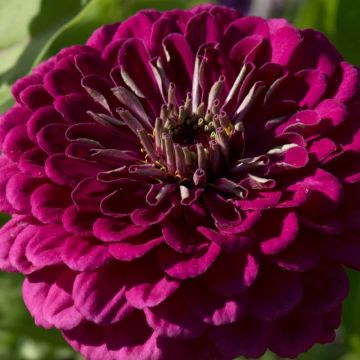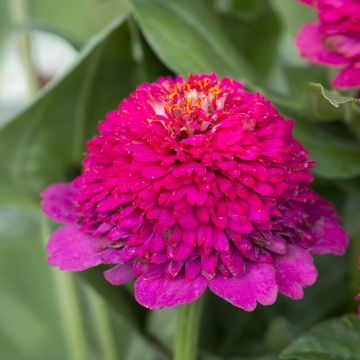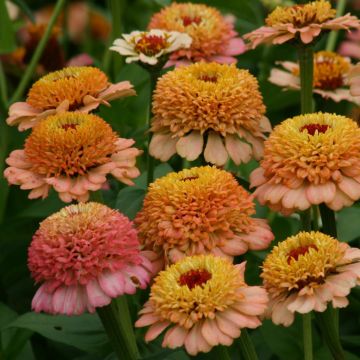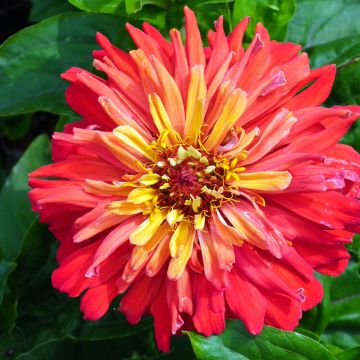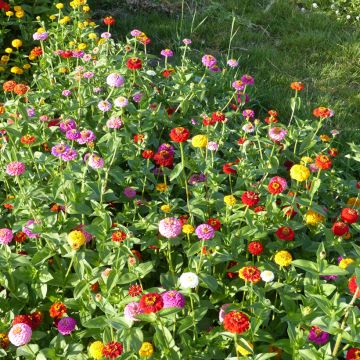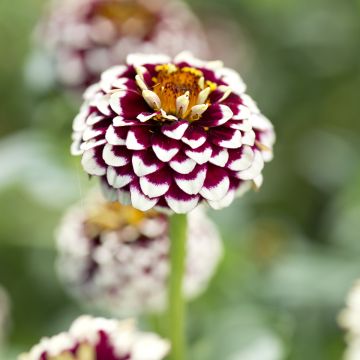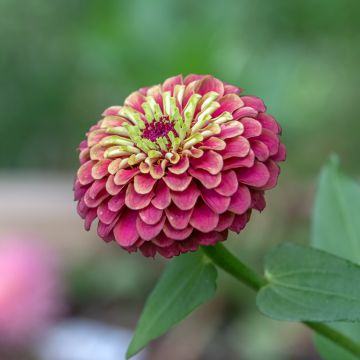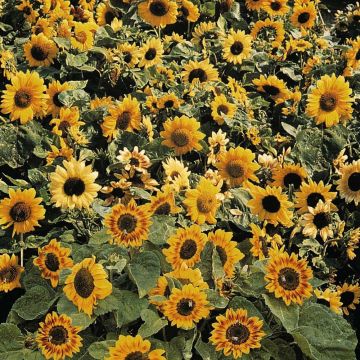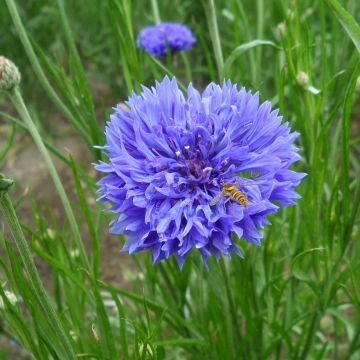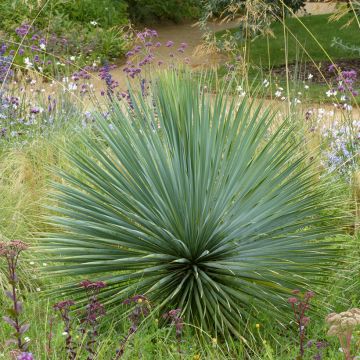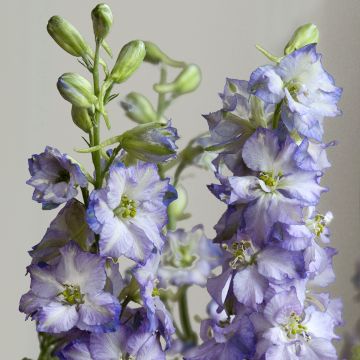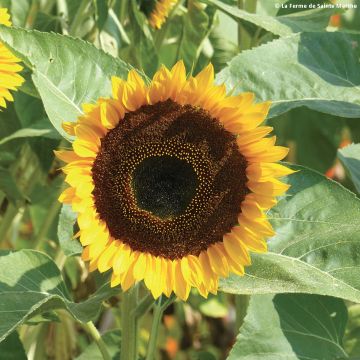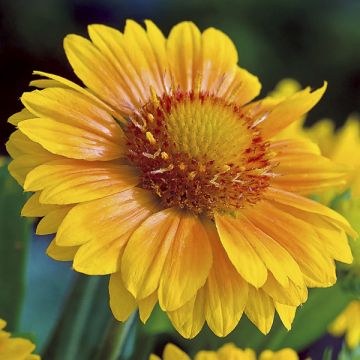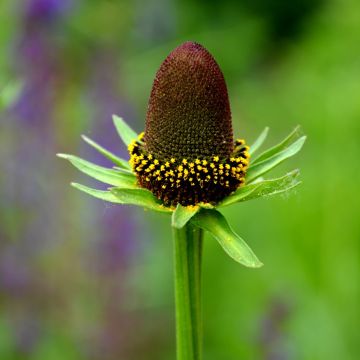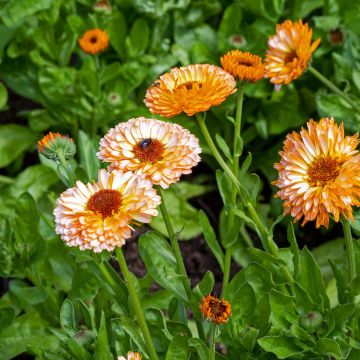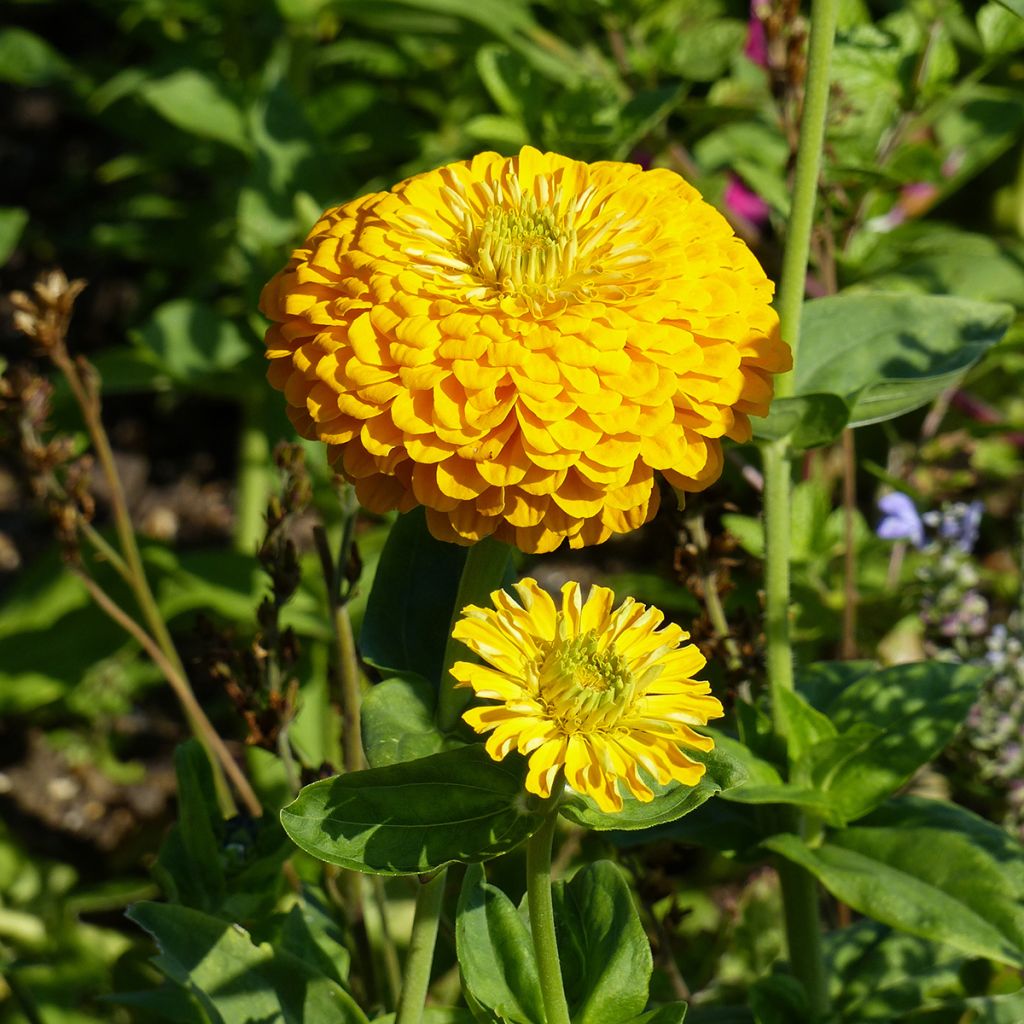

Zinnia elegans Canary Bird
Zinnia elegans Canary Bird
Zinnia elegans Canary Bird
Youth and old age
This item cannot be shipped to the selected country
Dispatch by letter from €3.90
More information
Schedule delivery date,
and select date in basket
This plant carries a 6 months recovery warranty
More information
We guarantee the quality of our plants for a full growing cycle, and will replace at our expense any plant that fails to recover under normal climatic and planting conditions.
Seed-only orders are dispatched by sealed envelope. The delivery charge for seed-only orders is €3.90.
Does this plant fit my garden?
Set up your Plantfit profile →
Description
The Zinnia elegans 'Canary Bird' stands out for the incredible size of its flowers, which are a very bright yellow. Its large semi-double flowers, in the form of heads, bloom from July until the first frost. With large, sturdy, and rigid stems, it reaches a height of 70 to 90 cm (28 to 35in). It enriches your garden with its long and intense flowering, creating a festive atmosphere. Cultivated as an annual flowering plant, the Zinnia elegans 'Canary Bird' grows quickly to enhance summer flower beds. The flowers, borne on long stems, are also stunning in fresh or dried bouquets. Resistant to diseases and tolerant of hot weather conditions, this variety, easy to grow, requires little care. Well-drained soil and sunlight are enough for it to show its best. An attractive and carefree plant!
The Zinnia elegans is an annual herbaceous plant native to scrublands and desert meadows in the southern United States and Mexico. It is a flower of the Asteraceae family, closely related to daisies and cosmos. Zinnia is synonymous with friendship and romantic love in the language of flowers. In the Victorian era, red and magenta zinnias were very popular for expressing romantic and amorous feelings. They also represent celebration and gathering among friends. Their Latin name, Zinnia, comes from Dr. Johann Gottfried Zinn, a European scholar who described one of the species in the genus in the 1600s. The common zinnia only became popular a century later.
The Zinnia elegans 'Canary Bird' was selected for the abundance and duration of its flowering, with very large and brightly coloured heads. It has a relatively fast growth, forming a well-branched clump, ranging from 0.70 to 0.90 m (2 to 3ft) in height. Its stems are hollow and relatively brittle, adorned with rough and fuzzy lanceolate to elliptical leaves, of medium green colour. Flowering occurs from July and continues until the first frost. The flowers appear in the axils of the leaves, they are large semi-double, hemispherical heads, slightly flattened, measuring 10 to 12 cm (4 to 5in) in diameter, composed of numerous ligulate petals with fringed edges, of a very bright yellow. The flowers resemble the inflorescence of some dahlias. It is a nectariferous plant that will delight bees and butterflies.
Highly appreciated for its vigour and robustness, the 'Canary Bird' Zinnia is also resistant to diseases, while perfectly tolerating heat and drought. Easy to grow, it likes neutral, rich, and well-drained soils, in a sunny location. In flower beds or borders, it can be combined with Gauras, Cosmos, Coreopsis, Nigelles de Damas, or grasses like Stipa tenuifolia or Eragrostis trichoides, for a more contemporary look. To add colour to the vegetable garden and attract beneficial insects, it can be planted between rows of vegetables. It can also be sown in pots to decorate the terrace in summer. Indoors, this zinnia will enhance your bouquets or floral arrangements with its large flowers.
The gardener's tip: Be careful of powdery mildew, which stains the foliage and hinders the plant's development. It can be avoided by spacing the zinnias moderately, allowing air to circulate between the plants, and avoiding wetting the leaves through ground watering.
Report an error about the product description
Flowering
Foliage
Plant habit
Botanical data
Zinnia
elegans
Canary Bird
Asteraceae
Youth and old age
Cultivar or hybrid
Other Zinnia seeds
Planting and care
Sow the seeds of Zinnia elegans 'Canary Bird' directly in open ground, from April to May, in loosened and warmed soil. Do not bury the seeds too deep (3 mm (1/8in) is sufficient) and space them about 30 cm (12in) apart. Keep the soil moist until germination, which usually takes between 7 and 14 days.
For early flowering, you can sow from February to April (indoors, at a temperature ranging from 15 to 25°C (59 to 77°F)) in a tray filled with good seed compost that you keep moist, but not waterlogged. When the plants are large enough to handle, transplant them into buckets. Acclimate your Zinnias gradually to cooler conditions for about fifteen days before planting them in the garden, once the risk of frost has passed. Space the plants 30 cm (12in) apart.
Zinnias thrive in the sun and withstand high temperatures well, as long as they are watered a little. They do best in neutral, rich, and well-drained soil. Although not demanding, they can still tolerate average garden soil. They may occasionally be prone to powdery mildew; a nuisance that can be easily avoided by not planting them in confined areas and being careful not to wet their foliage. Pay attention during planting to the appetite of slugs, which love their tender young leaves.
Sowing period
Intended location
This item has not been reviewed yet - be the first to leave a review about it.
Flower seeds
Haven't found what you were looking for?
Hardiness is the lowest winter temperature a plant can endure without suffering serious damage or even dying. However, hardiness is affected by location (a sheltered area, such as a patio), protection (winter cover) and soil type (hardiness is improved by well-drained soil).

Photo Sharing Terms & Conditions
In order to encourage gardeners to interact and share their experiences, Promesse de fleurs offers various media enabling content to be uploaded onto its Site - in particular via the ‘Photo sharing’ module.
The User agrees to refrain from:
- Posting any content that is illegal, prejudicial, insulting, racist, inciteful to hatred, revisionist, contrary to public decency, that infringes on privacy or on the privacy rights of third parties, in particular the publicity rights of persons and goods, intellectual property rights, or the right to privacy.
- Submitting content on behalf of a third party;
- Impersonate the identity of a third party and/or publish any personal information about a third party;
In general, the User undertakes to refrain from any unethical behaviour.
All Content (in particular text, comments, files, images, photos, videos, creative works, etc.), which may be subject to property or intellectual property rights, image or other private rights, shall remain the property of the User, subject to the limited rights granted by the terms of the licence granted by Promesse de fleurs as stated below. Users are at liberty to publish or not to publish such Content on the Site, notably via the ‘Photo Sharing’ facility, and accept that this Content shall be made public and freely accessible, notably on the Internet.
Users further acknowledge, undertake to have ,and guarantee that they hold all necessary rights and permissions to publish such material on the Site, in particular with regard to the legislation in force pertaining to any privacy, property, intellectual property, image, or contractual rights, or rights of any other nature. By publishing such Content on the Site, Users acknowledge accepting full liability as publishers of the Content within the meaning of the law, and grant Promesse de fleurs, free of charge, an inclusive, worldwide licence for the said Content for the entire duration of its publication, including all reproduction, representation, up/downloading, displaying, performing, transmission, and storage rights.
Users also grant permission for their name to be linked to the Content and accept that this link may not always be made available.
By engaging in posting material, Users consent to their Content becoming automatically accessible on the Internet, in particular on other sites and/or blogs and/or web pages of the Promesse de fleurs site, including in particular social pages and the Promesse de fleurs catalogue.
Users may secure the removal of entrusted content free of charge by issuing a simple request via our contact form.
The flowering period indicated on our website applies to countries and regions located in USDA zone 8 (France, the United Kingdom, Ireland, the Netherlands, etc.)
It will vary according to where you live:
- In zones 9 to 10 (Italy, Spain, Greece, etc.), flowering will occur about 2 to 4 weeks earlier.
- In zones 6 to 7 (Germany, Poland, Slovenia, and lower mountainous regions), flowering will be delayed by 2 to 3 weeks.
- In zone 5 (Central Europe, Scandinavia), blooming will be delayed by 3 to 5 weeks.
In temperate climates, pruning of spring-flowering shrubs (forsythia, spireas, etc.) should be done just after flowering.
Pruning of summer-flowering shrubs (Indian Lilac, Perovskia, etc.) can be done in winter or spring.
In cold regions as well as with frost-sensitive plants, avoid pruning too early when severe frosts may still occur.
The planting period indicated on our website applies to countries and regions located in USDA zone 8 (France, United Kingdom, Ireland, Netherlands).
It will vary according to where you live:
- In Mediterranean zones (Marseille, Madrid, Milan, etc.), autumn and winter are the best planting periods.
- In continental zones (Strasbourg, Munich, Vienna, etc.), delay planting by 2 to 3 weeks in spring and bring it forward by 2 to 4 weeks in autumn.
- In mountainous regions (the Alps, Pyrenees, Carpathians, etc.), it is best to plant in late spring (May-June) or late summer (August-September).
The harvesting period indicated on our website applies to countries and regions in USDA zone 8 (France, England, Ireland, the Netherlands).
In colder areas (Scandinavia, Poland, Austria...) fruit and vegetable harvests are likely to be delayed by 3-4 weeks.
In warmer areas (Italy, Spain, Greece, etc.), harvesting will probably take place earlier, depending on weather conditions.
The sowing periods indicated on our website apply to countries and regions within USDA Zone 8 (France, UK, Ireland, Netherlands).
In colder areas (Scandinavia, Poland, Austria...), delay any outdoor sowing by 3-4 weeks, or sow under glass.
In warmer climes (Italy, Spain, Greece, etc.), bring outdoor sowing forward by a few weeks.

































